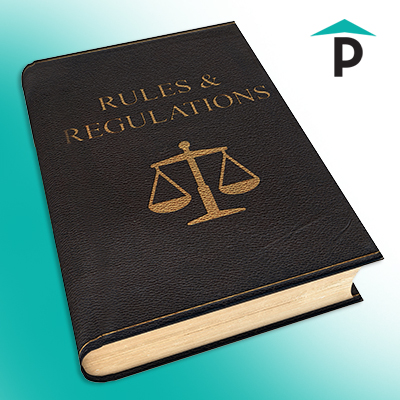Call (844) 612-7238
 There seems to be a lot of confusion out there relating to the difference between subcontractor default insurance and subcontractor performance bonds. As there is new legislation in place now that could force general contractors to pay for work twice if a subcontractor fails to pay wages to their workers, it’s vital that we release this article in the hope of setting the record straight once and for all. All the information you need about subcontractor default insurance and subcontractor performance bonds is freely available on this page. So, make sure you read the text and grasp the concept because it could mean the difference between the continued success of your organization and lots of hassle.
There seems to be a lot of confusion out there relating to the difference between subcontractor default insurance and subcontractor performance bonds. As there is new legislation in place now that could force general contractors to pay for work twice if a subcontractor fails to pay wages to their workers, it’s vital that we release this article in the hope of setting the record straight once and for all. All the information you need about subcontractor default insurance and subcontractor performance bonds is freely available on this page. So, make sure you read the text and grasp the concept because it could mean the difference between the continued success of your organization and lots of hassle.
So, what is subcontractor default insurance?
When a subcontractor defaults in performance, general contractors could be held responsible for any missed payments or mistakes. A decent and thorough subcontractor default insurance policy will compensate the general contractor when that happens, and it should protect them from the financial implications of the situation. Lots of insurance companies offer that product these days, but SDI is most commonly referred to as Subguard® which was the policy developed by Zurich Surety. Some people think these policies are the best alternative to traditional bonding projects, but that isn’t always the case as you will learn in just a moment.
Our subcontractor default insurance bonds a cheaper alternative?
 That is an excellent question. Like most other insurance policies, general contractors will pay a premium. That amount of money is often lower than those people might pay when dealing with contract bonds. However, there are some extra costs involved that you won’t want to overlook when making your decision. The carrier and the general contractor have to agree on the deductible the contractor must pay out before the policy will cover claims. That figure is usually quite high, and it’s not unusual for it to range somewhere between $250,000 and $500,000. Alongside that deductible, general contractors will have to consider a co-pay which is paid up to the retention aggregate. That is often three to five times the deductible, and it is also the highest amount the insured contractor will have to pay for any claims.
That is an excellent question. Like most other insurance policies, general contractors will pay a premium. That amount of money is often lower than those people might pay when dealing with contract bonds. However, there are some extra costs involved that you won’t want to overlook when making your decision. The carrier and the general contractor have to agree on the deductible the contractor must pay out before the policy will cover claims. That figure is usually quite high, and it’s not unusual for it to range somewhere between $250,000 and $500,000. Alongside that deductible, general contractors will have to consider a co-pay which is paid up to the retention aggregate. That is often three to five times the deductible, and it is also the highest amount the insured contractor will have to pay for any claims.
So, the initial costs are usually lower with subcontractor default insurance bonds than subcontractor performance bonds. However, in instances where the general contractor uses a subcontractor who defaults, the company concerned might face many out-of-pocket liabilities that could place a lot of strain on the progress of their operation.
Does the contractor benefit from increased control?
While some general contractors will use subcontractor performance bonds for each of their subcontractors, the same is not true when it comes to subcontractor default insurance. The company concerned will often take out a single policy that covers all the subcontractors they might use within a predetermined term. That means the people in charge have the responsibility of assessing their subcontractors and their working practices to ensure they only select the firms least likely to default on salary payments to their workers. The process of doing that is the responsibility of the general contractor rather than the surety.
 There are some benefits companies encounter when selecting subcontractor default insurance. Indeed, that is why so many firms still purchase those policies today. For example, one of the most attractive aspects for business owners is that default may be declared and the general contractor may respond immediately rather than wait for an investigation to take place by the surety. All inquiries take time, and they could cause further delays to the project that the general contractor can’t allow. When the general contractor believes their subcontractors are going to default, they can trigger potential coverage under their insurance policy.
There are some benefits companies encounter when selecting subcontractor default insurance. Indeed, that is why so many firms still purchase those policies today. For example, one of the most attractive aspects for business owners is that default may be declared and the general contractor may respond immediately rather than wait for an investigation to take place by the surety. All inquiries take time, and they could cause further delays to the project that the general contractor can’t allow. When the general contractor believes their subcontractors are going to default, they can trigger potential coverage under their insurance policy.
There are also lots of downsides, and most of them relate to the expenses the general contractor will have to cover out of their pocket. That is why subcontractor default insurance is more popular with large companies rather than small operations. The general contractor will often have to cover the cost of replacing the subcontractor in default, and then attempt to recover the money at a later date. Unexpected spending of that nature could place a lot of financial strain on the companies concerned, and it could also result in projects overrunning and causing many issues for everyone involved.
As a rule, subcontractor default insurance is only suitable for established companies that subcontract more than $100 million per year. Firms smaller than that might struggle to cover some of the upfront costs they face, and that is why they should always consider subcontractor payment bonds as the best solution for their requirements.
So, is subcontractor default insurance a viable alternative to subcontractor performance bonds?
No, it is not. If the general contractor has no choice but to declare a default, it is the contractor alone who can make a claim on the insurance policy. With performance bonds, the owner has the right to make a claim, but that is not the case when it comes to subcontractor default insurance. When companies need to make a claim, the insurer has to deal with the situation within thirty days. However, the general contractor has to prove they already paid the deductible, and the insurer has no responsibility to assist until they do. The truth of the matter is that if the contractor doesn’t meet its deductible and decides to file for bankruptcy, the owner, alongside subcontractors and suppliers, will be left with no recourse.
At the end of the day, comparing subcontractor default insurance and subcontractor performance bonds is not unlike comparing salt and pepper. While they both help to add some flavor to your meal, there are significant differences between the two. The last thing you want to do is salt your steak or pepper your fries, right? If you work for or own a large construction company, there are instances in which subcontractor default insurance and subcontractor performance bonds will ensure protection.
Check out Pinnacle Surety on Social Media.
We know it isn’t easy keeping up with industry trends and information—that’s why we’re here to help!
In our effort to support our partner and client initiatives, Pinnacle’s official Social Media channels are now up and running to provide company news, articles, blog updates, insider tips and thoughtful discussion!
We hope you’ll join us by giving Pinnacle a Follow on our Facebook and Twitter accounts and chiming in on the conversation! Have any questions, comments or concerns? Send us a PM on Facebook or give us Tweet at @PinnacleSurety.


